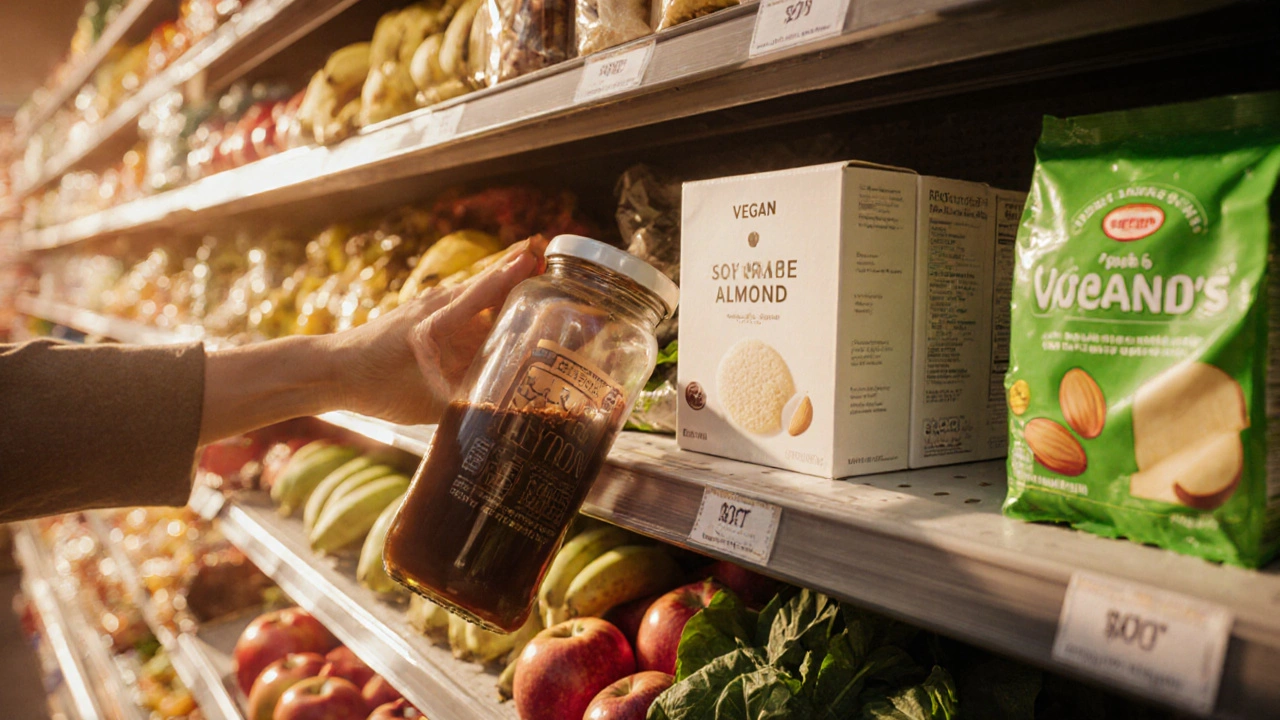
Accidentally Vegan Foods: Unexpected Plant‑Based Picks You Can Eat Today
Discover common foods that are vegan without being labeled as such. Learn how to spot accidental vegan items, verify ingredients, and build a plant‑based pantry effortlessly.
When talking about accidentally vegan foods, products that contain no animal‑derived ingredients yet aren’t marketed as vegan. Also known as unintentional plant‑based foods, they often slip past shoppers because manufacturers focus on flavor, not on vegan branding. Spotting these hidden gems can expand your pantry without compromising your values.
One of the biggest clusters in this space is vegan candy, confections that lack animal‑derived ingredients like gelatin or dairy but aren’t labeled as vegan. Brands such as certain Oreos and M&Ms have released versions that meet plant‑based standards, yet many legacy recipes still qualify by accident. Knowing that vegan candy exists even when the packaging says nothing about it opens up a whole aisle of dessert options.
Another popular sub‑type is dairy‑free cookies, cookies that use alternatives like oil, coconut milk, or plant‑based spreads instead of butter or milk. These treats often appear in the regular cookie aisle, and unless you read the ingredient list, you might miss the fact that they’re free from animal products. This category shows how ingredient swaps can create unintentionally vegan snacks.
Both vegan candy and dairy‑free cookies illustrate the first semantic triple: Accidentally vegan foods encompass vegan candy and dairy‑free cookies. They also highlight the second triple: Identifying accidentally vegan foods requires careful label reading. The third triple emerges as Ingredient transparency enables shoppers to spot hidden dairy.
Beyond sweets, ingredient transparency, clear disclosure of all components, including minor additives and processing aids plays a crucial role. When manufacturers detail every element, you can quickly see if a product contains whey, casein, or egg‑based emulsifiers. Transparency not only helps vegans but also those with allergies or dietary restrictions.
Understanding ingredient transparency dovetails with knowledge of plant‑based labeling practices. Many regions lack strict definitions for “vegan,” so a product may be free from animal ingredients without displaying a vegan symbol. This gap creates a reliance on savvy shoppers who know to look for terms like “no dairy,” “egg‑free,” or “contains no animal‑derived ingredients.”
Cross‑contamination is another layer to consider. Even if a snack is technically free from animal ingredients, it might be processed on equipment shared with non‑vegan items. For most casual vegans, this is a minor concern, but strict vegans often scout for dedicated vegan facilities. Knowing the difference helps you decide which accidentally vegan foods fit your personal standards.
Food labeling laws also influence how easily you can identify these products. In some markets, manufacturers must list all allergens but not every animal derivative, leaving hidden sources like l‑cysteine or certain food colorings unchecked. Keeping abreast of local labeling regulations can sharpen your ability to pick out unintentionally vegan items.
Practical shopping tips round out the picture. Start by scanning the front of the package for “no animal ingredients” claims, then dive into the ingredient list for clues like “powdered whey” or “caseinate.” When in doubt, a quick online search of the product’s SKU often reveals community‑curated vegan status databases. This habit turns a routine grocery run into a treasure hunt for hidden plant‑based delights.
Common misconceptions also surface. Many assume that anything chocolate‑based contains dairy, yet dark chocolate can be vegan if it lacks milk fat. Similarly, “sugar” is sometimes processed with bone char, making it non‑vegan despite a simple ingredient list. Spotting these nuances underscores why accidentally vegan foods deserve a dedicated look.
By now you’ve seen how accidentally vegan foods intersect with vegan candy, dairy‑free cookies, ingredient transparency, and labeling practices. The collection below pulls together articles that dig deeper into each of these angles, offering recipes, label‑reading guides, and the latest updates on plant‑based candy options. Dive in to discover the full range of hidden vegan treats waiting on shelves near you.

Discover common foods that are vegan without being labeled as such. Learn how to spot accidental vegan items, verify ingredients, and build a plant‑based pantry effortlessly.